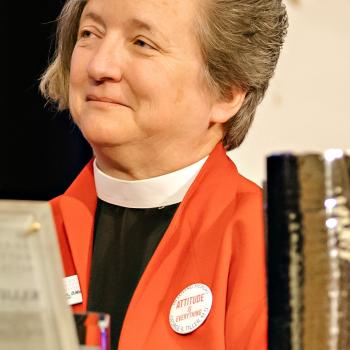 Readers have asked for my opinion about the Holy Father’s Apostolic Exhortation, and apart from a couple of posts over the weekend about the issue of marriage in general I haven’t commented that much.
Readers have asked for my opinion about the Holy Father’s Apostolic Exhortation, and apart from a couple of posts over the weekend about the issue of marriage in general I haven’t commented that much.
That’s because I haven’t had the time to read the exhortation.
Now, having read it, my reactions are much the same as a good number of other people. From a literary point of view I wish the pope had a better editor. The exhortation is prolix, in English some of it comes across as muddled, vague and even ambiguous. I miss the brevity and clarity of Pope Benedict.
But putting all that aside, I must say that the exhortation is beautiful in many ways. I was very moved by the exposition of St Paul’s chapter on love in I Corinthians 13 and I found the pope’s grandfatherly advice on marriage relationships in that chapter touching–even if it was at times sentimental. I found the chatty and informal tone winning. I was grateful for the continuity of teaching when the pope connected with Paul VI’s Humane Vitae, John Paul II’s Theology of the Body and Benedict XVI’s affirmations of marriage. I appreciated his clear and moving pro life stance–his opposition to abortion, his defense of the elderly and the disabled and his firm stance against same sex marriage and transgender ideologies. There is far more to love and like about this exhortation than there is to dislike.
So let us consider chapter eight which people at both extremes of the American Catholic church have jumped on. In chapter eight the pope discusses appropriate pastoral approaches to those whose marital situations are “less than the Catholic ideal.” The progressives have claimed that the document allows communion for divorced and remarried people and are delighted. Conservatives agree but are dismayed.
When I say “dismayed” may I have a prize for understatement? I’ve seen some absurd and completely loopy interpretations from some conservatives in which they say outright that the pope is an anti Christ, a heretic and that he has now said divorce and remarriage are okay. Someone wrote saying that Henry VIII would be pleased because he finally has the pope he wanted who says all this divorces and marriages are A-OK.
In saying that some conservatives have over reacted, it must be said that some progressives have too. I had an email from one person who assumed there would be a new procedure to grant divorced and remarried Catholics a dispensation to receive communion. They wondered how a priest would go about “making exceptions” to the rule for couples in his care.
I don’t think chapter eight says any of that at all. Here, in a few points, is what the Pope is trying very hard to communicate to us:
- Modern Marriage is a Mess – for many complicated reasons marriage in the modern world is in crisis. As a result there are many of our people who are the walking wounded.
- The Church is Global – the Marriage Mess is different in different parts of the world for a complex series of reasons. The situation in the barrios of Brazil is not the same as suburban American and not the same in the Philippines or Nigeria. Cultures are different. Socio economic conditions are different. Many things are different.
- One Pastoral Method Does Not Fit All – While we uphold the simple definition of Christian marriage as between one man and one woman for life, the situation of a polygamous culture in Africa and a no fault divorce culture in America and a machismo culture in Argentina and a cohabiting culture in Europe means that while we uphold the ideal, matching our lives to that ideal is increasingly complex and it is impossible to set out one pastoral methodology which will apply to everyone.
- The Church is Welcoming Not Excluding – Pope Francis wants us to open the doors to those who are caught up in the Marriage Mess. This does not mean we sacrifice or compromise the ideal, but it does mean that we listen to the real life situations of real people. Jesus was in the dust with the woman caught in adultery and he condemned the self righteous scribes and Pharisees who stood apart with stones a-ready. The Pope calls us to be with Jesus in the dust not with the Pharisees in their lust.
- Priests and people should Work With the Wounded – Some people who are divorced and re-married have simply flaunted the church’s rules and could care less about the faith. Pope Francis recognizes this and condemns them. On the other hand, many are genuinely wounded, genuinely repentant and genuinely want to belong to the church and follow Jesus Christ despite their “irregular relationships.” In other words, they want to find peace, they’ve messed up and they know it and they want to find reconciliation and the way forward.
- Those Who Fall Short of the Ideal Should be Integrated – Pope Francis want us to welcome and integrate those whose relationships are “less than ideal”. We should remember that those whose relationship are “less than ideal” are not just the divorced and remarried. There are numerous complex relationships that fall short of the Catholic ideal. These people should be welcomed into the church and asked to participate in prayer, Bible study, charitable activity, fellowship and full life in the parish except for the reception of communion
- Integration Does Not Demand Reception of Communion – there is a very interesting observation over at Church Militant in which the author specifically quotes Pope Francis in his press conference on the way back from Mexico and the Pope specifically says “No Communion for the Divorced and Remarried.” Check out the article.
Pope Francis, with unusual clarity, responded, “This is the last thing. Integrating in the Church doesn’t mean receiving Communion.”
The Pope immediately gave an anecdotal story to make clear his point.
I know married Catholics in a second union who go to church, who go to church once or twice a year and say I want Communion, as if joining in Communion were an award. It’s a work towards integration; all doors are open. But we cannot say from here on they can have Communion. This would be an injury also to marriage, to the couple, because it wouldn’t allow them to proceed on this path of integration.
Then what to make of the footnote in Chapter 8 which refers to couples in “irregular relationships” as needing the sacraments? Continue Reading












